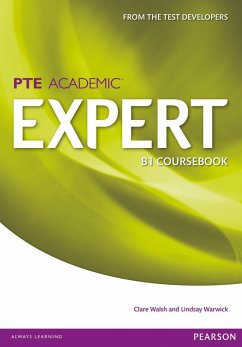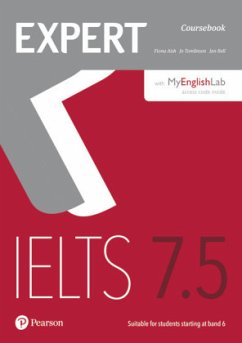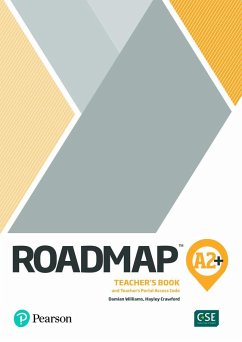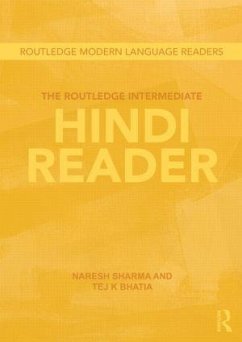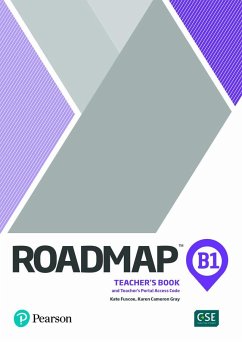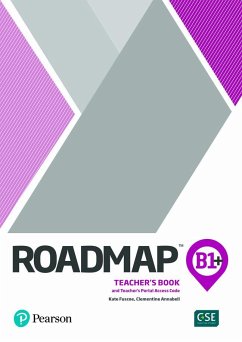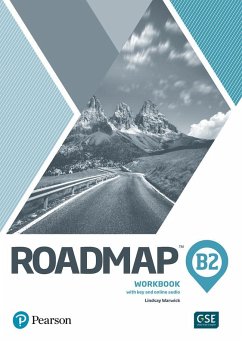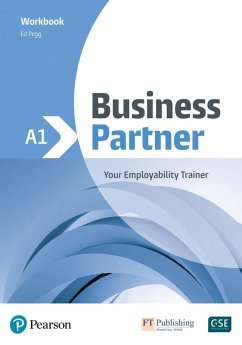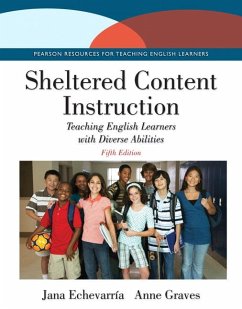Nicht lieferbar
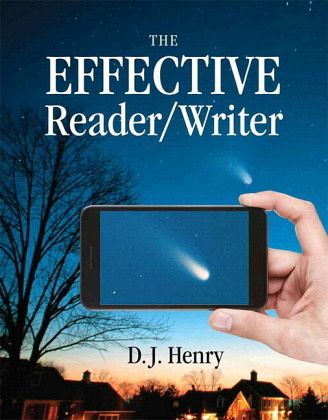
Effective Reader/Writer, The Plus NEW MySkillsLab with Pearson eText, Access Card Package
Versandkostenfrei!
Liefertermin unbestimmt
78,99 €
inkl. MwSt.
The revolutionary approach of D.J. Henry’s The Effective Reader / Writer offers a visually rich, high-interest, and down-to-earth approach that reinforces the reading, writing, and thinking processes while showing students how to take responsibility for their learning.
The Effective Reader/Writer offers a balanced approach to literacy by bringing instruction for reading and writing together in one textbook. Emphasis on reading and writing as processes is embedded in instruction throughout. The reading, writing, and reading/writing processes are introduced and illustrated (utilizing Dorling-Kindersley design) in Unit 1 with two-page full-color graphics that explain and visually represent these processes individually and then show how they work together. Appropriate process icons appear throughout the textbook as signals to guide students through the reading and writing process of particular assignments (in the eText and in the MySkillsLab book-specific module, these icons launch videos and interactive media that help broaden student understanding).
Perhaps one of the greatest motivations and underlying goal of The Effective Reader/Writer is to offer an opportunity to develop the literacy skills of students as quickly as possible. To do so, The Effective Reader/Writer taps intobrain-based learning, fosters metacognition, places instruction in meaningfulcontexts, and engages students with high-interest content and visualpresentation.
Product Description
ALERT: Before you purchase, check with your instructor or review your course syllabus to ensure that you select the correct ISBN. Several versions of Pearson's MyLab & Mastering products exist for each title, including customized versions for individual schools, and registrations are not transferable. In addition, you may need a CourseID, provided by your instructor, to register for and use Pearson's MyLab & Mastering products.
Packages
Access codes for Pearson's MyLab & Mastering products may not be included when purchasing or renting from companies other than Pearson; check with the seller before completing your purchase.
Used or rental books
If you rent or purchase a used book with an access code, the access code may have been redeemed previously and you may have to purchase a new access code.
Access codes
Access codes that are purchased from sellers other than Pearson carry a higher risk of being either the wrong ISBN or a previously redeemed code. Check with the seller prior to purchase.
--
The revolutionary approach of D.J. Henry’s The Effective Reader / Writer offers a visually rich, high-interest, and down-to-earth approach that reinforces the reading, writing, and thinking processes while showing students how to take responsibility for their learning.
Features + Benefits
· The ground-breaking design of The Effective Reader / Writer (developed in conjunction with Dorling Kindersley Publishers [DK]) makes writing, reading and thinking processes visible, and shows the interconnected processes rather than just informing students about them.
· This visual approach—created specifically for today’s visually-oriented learners-is complemented by the student-centered learning strategy called “What’s the Point?” Not only does "What's the Point?" demonstrate real-world scenarios or applications of reading, writing, and thinking in context, but this directed thinking activity also prompts students to set a learning goal, call on prior knowledge, predict information, focus on structure, and generate details for each interrelated lesson. Thus, the visual approach and the “What's the Point?” theme of The Effective reader / Writer inspire student-centered learning and motivation by illustrating the power of reading, writing, and thinking in life.
· Critical thinking is vital to success in college and beyond. A critical thinker raises questions, considers multiple perspectives, gathers,analyzes, and assesses information, applies new knowledge, and reflects toself-improve. While Unit 5 offers extensive direct instruction for the high levelcritical thinking skills, The Effective Reader/Writer deepens critical thinking byasking students to assume the role of both readers and writers within eachand every module.
· Critical thinkers are engaged learners who think about their thinking (metacognition).The Effective Reader/Writerfosters and encourages engaged learningand metacognition.
· Each module in Units 1–6 begins by stating student learning outcomes and offering pre-learning activities called “What’s the Point?” that guide students in the use of predicting, questioning, and setting a purpose for learning. Throughout the modules, students learn by applying core concepts to meaningful reading and writing situations, thereby developing and internalizing reading and writing processes. Modules end with after-learning summaries and applications tied to the module’s student learning outcomes so students may self-assess, monitor progress, and address individual needs.
· The best way to learn is to do. Thus, one of the primary aims of this text is to give students plentiful opportunities to apply what they are learning. Every concept introduced in the book is accompanied by an explanation of the concept, an example with explanation of the example, and one or more practice exercises.
· Each module contains two review tests, in which students read passages to practice their reading skills and then respond to the passage in writing based on a What Do You Think? writing prompt.
· Each module closes with a review that enables students to self-assess, monitor progress, and address individual needs.
· Each module features a section of reading and writing assignments. These assignments create realistic writing situations that direct students to consider audience and purpose as they respond to topics and situations relevant to “Everyday Life,” “College Life,” and “Working Life.” Thus, the text offers several levels of learning. Not only are students given an abundance of practice so that they focus on individual skills, but they are also provided with challenging writing situations in which to employ their reading/writing process.
· The Effective Reader/Writer engages students’ interests and builds on their prior knowledge by offering high-interest topics and assignments relevant to their academic, personal, and career lives.
· The Effective Reader/Writer offers students access to and experience with materials that present both professional and student writing that span various patterns of organization and genres (such as essays, textbook excerpts, articles from books, magazines, online sources). Through immersion in text structure, students develop a sense of why an author chooses a particular organizational pattern or genre for a specific purpose. Students experience the power of well-organized text to convey a message.
Detailed Table of Contents
Unit 1: The Reading and Writing Processes
Module 1: An Introduction to Reading and Writing
Answer the Question: “What the Point of Reading and Writing?”
Connect Reading and Writing
Activate Prior Knowledge during Reading and Writing
Assess the Reading Situation and the Writing Situation
The Topic: What You Read or Write
The Purpose: Why You Read or Write
The Audience: Who You Are as a Reader and Who Reads Your Writing
Reading and Writing Assignments [MySkillsLab logo]
Workshop: Write to Learn
Review Test 1 “Gender and the Work Place”
Review Test 2 “Decision-Making Styles”
Academic Learning Log: Chapter Review [MySkillsLab logo]
Module 2: Use the Reading Process to Comprehend a Point
Answer the Question, “What’s the Point of the Reading Process?”
Explain SQ3R as a Reading Process
Before Reading: Survey and Question
Survey
Question
During Reading: Read and Annotate
Read
Annotate
After Reading: Recite and Review
Recite
Review
Reading and Writing Assignments [MySkillsLab logo]
Workshop: Write to Learn
Review Test 1: Aging: Physical Changes
Review Test 2: Parkinson’s Disease
Academic Learning Log: Chapter Review [MySkillsLab logo]
Module 3: Use the Writing Process to Make a Point
Answer the Question: “What’s the Point of Using the Writing Process?”
Prewrite a Piece of Writing
Asking Questions
Freewriting
Listing
Concept Mapping
Outlining: A Writing Plan
Draft a Piece of Writing
Compose a Main Idea
Supporting and Expanding Your Main Idea Statement into a Draft
Revise a Piece of Writing
Revision Questions
Revision Strategies
Proofread a Piece of Writing
Reading and Writing Assignments [MySkillsLab logo]
Workshop: Compose a Paragraph
Review Test 1 “Technology Is Linked to the Change of One Type of Society to Another”
Review Test 2 “The Beginnings of Culture”
Academic Learning Log: Chapter Review [MySkillsLab logo]
Module 4: Develop a Reading/Writing Strategy
Answer the Question, “What’s the Point of Developing a Reading-Writing Strategy?”
Develop a Reading-Writing Strategy
Apply the Reading-Writing Strategy: Before, During, and After Reading
Survey
Question
Read
Annotate
Recite
Review
Brainstorm
Apply the Reading-Writing Strategy: After Reading, Write a Draft
Apply the Reading-Writing Strategy: After Writing, Review, Revise, and Proofread Your Draft
Review
Revise
Proofread
Reading and Writing Assignments [MySkillsLab logo]
Workshop: Develop a Reading-Writing Strategy
Review Test 1 “Five Tips: Getting the Most from Your Credit Card”
Review Test 2 “Using Nonverbal Communication”
Academic Learning Log: Chapter Review [MySkillsLab logo]
Unit 2: Vocabulary
Module 5: Learning and Using New Words
Answer the Question: “What’s the Point of Learning and Using New Words?”
Employ Context Clues: A SAGE Approach
Synonyms
Antonyms
General Context
Examples
Analyze Word Parts
Roots
Prefixes
Suffixes
Use a Dictionary
How to Access and Read an Online Dictionary
Spelling and Syllables
Pronunciation
Parts of Speech
Definitions
Use Vocabulary Resources in Textbooks
Be Aware of Content Area Words
Look for Textbook Definitions
Use a Glossary
Reading and Writing Assignments [MySkillsLab logo]
Workshop: Compose a Paragraph
Review Test 1 “Special Effects”
Review Test 2 “Earth’s Physical Systems”
Academic Learning Log: Chapter Review [MySkillsLab logo]
Module 6: Word Choice, Tone, and Purpose
Answer the Question: “What’s the Point of Word Choice, Tone, and Purpose?”
Connect Topic, Audience, Tone, Purpose, and Word Choice
Use Tone to Comprehend or Make a Point
Use Subjective and Objective Tone Words to Comprehend and Make a Point
Use Formal and Informal Tone Words to Comprehend and Make a Point
Determine the General Purpose to Comprehend and Make a Point
Figure Out the Primary Purpose to to Comprehend and Make a Point
Reading and Writing Assignments [MySkillsLab logo]
Workshop: Compose a Paragraph
Review Test 1 “Is Big Brother Knocking on the Door? Civil Liberties and Homeland Security”
Review Test 2 “Social Class in the United States”
Academic Learning Log: Chapter Review [MySkillsLab logo]
Unit 3: Reading and Writing Paragraphs and Essays
Module 7: Stated Main Ideas in Reading and Writing Paragraphs
Answer the Question, “What’s the Point of Main Ideas and Topic Sentences?”
Identify the Three Parts of a Paragraph
Recognize the Traits of a Main Idea
Identify the Topic of a Paragraph
Identify a Topic Sentence
Identify the Flow of Ideas and Placement of Topic Sentences
Topic Sentence at the Beginning of a Paragraph
Topic Sentence Within a Paragraph
Topic Sentence at the End of a Paragraph
Topic Sentence at the Beginning and the End of a Paragraph
Compose a Topic Sentence
Narrow the Topic
Write the Topic Sentence
Reading and Writing Assignments [MySkillsLab logo]
Workshop: Compose a Paragraph
Review Test 1 “Skin Cancer”
Review Test 2 “What is Learning”
Academic Learning Log: Chapter Review [MySkillsLab logo]
Module 8: Supporting Details in Reading and Writing Paragraphs
Answer the Question, “What’s the Point of Supporting Details?”
Ask Questions for Locating Supporting Details
Distinguish between Major and Minor Details
Create a Summary from Annotations
Create Logical Order
Develop Relevant and Adequate Details
Analyze the Effectiveness of a Paragraph
Reading and Writing Assignments [MySkillsLab logo]
Workshop: Compose a Paragraph
Review Test 1 “Capitalism: Competing in a Free Market”
Review Test 2 “Family Cohesion”
Academic Learning Log: Chapter Review [MySkillsLab logo]
Module 9: Implied Main Ideas in Reading
The Effective Reader/Writer offers a balanced approach to literacy by bringing instruction for reading and writing together in one textbook. Emphasis on reading and writing as processes is embedded in instruction throughout. The reading, writing, and reading/writing processes are introduced and illustrated (utilizing Dorling-Kindersley design) in Unit 1 with two-page full-color graphics that explain and visually represent these processes individually and then show how they work together. Appropriate process icons appear throughout the textbook as signals to guide students through the reading and writing process of particular assignments (in the eText and in the MySkillsLab book-specific module, these icons launch videos and interactive media that help broaden student understanding).
Perhaps one of the greatest motivations and underlying goal of The Effective Reader/Writer is to offer an opportunity to develop the literacy skills of students as quickly as possible. To do so, The Effective Reader/Writer taps intobrain-based learning, fosters metacognition, places instruction in meaningfulcontexts, and engages students with high-interest content and visualpresentation.
Product Description
ALERT: Before you purchase, check with your instructor or review your course syllabus to ensure that you select the correct ISBN. Several versions of Pearson's MyLab & Mastering products exist for each title, including customized versions for individual schools, and registrations are not transferable. In addition, you may need a CourseID, provided by your instructor, to register for and use Pearson's MyLab & Mastering products.
Packages
Access codes for Pearson's MyLab & Mastering products may not be included when purchasing or renting from companies other than Pearson; check with the seller before completing your purchase.
Used or rental books
If you rent or purchase a used book with an access code, the access code may have been redeemed previously and you may have to purchase a new access code.
Access codes
Access codes that are purchased from sellers other than Pearson carry a higher risk of being either the wrong ISBN or a previously redeemed code. Check with the seller prior to purchase.
--
The revolutionary approach of D.J. Henry’s The Effective Reader / Writer offers a visually rich, high-interest, and down-to-earth approach that reinforces the reading, writing, and thinking processes while showing students how to take responsibility for their learning.
Features + Benefits
· The ground-breaking design of The Effective Reader / Writer (developed in conjunction with Dorling Kindersley Publishers [DK]) makes writing, reading and thinking processes visible, and shows the interconnected processes rather than just informing students about them.
· This visual approach—created specifically for today’s visually-oriented learners-is complemented by the student-centered learning strategy called “What’s the Point?” Not only does "What's the Point?" demonstrate real-world scenarios or applications of reading, writing, and thinking in context, but this directed thinking activity also prompts students to set a learning goal, call on prior knowledge, predict information, focus on structure, and generate details for each interrelated lesson. Thus, the visual approach and the “What's the Point?” theme of The Effective reader / Writer inspire student-centered learning and motivation by illustrating the power of reading, writing, and thinking in life.
· Critical thinking is vital to success in college and beyond. A critical thinker raises questions, considers multiple perspectives, gathers,analyzes, and assesses information, applies new knowledge, and reflects toself-improve. While Unit 5 offers extensive direct instruction for the high levelcritical thinking skills, The Effective Reader/Writer deepens critical thinking byasking students to assume the role of both readers and writers within eachand every module.
· Critical thinkers are engaged learners who think about their thinking (metacognition).The Effective Reader/Writerfosters and encourages engaged learningand metacognition.
· Each module in Units 1–6 begins by stating student learning outcomes and offering pre-learning activities called “What’s the Point?” that guide students in the use of predicting, questioning, and setting a purpose for learning. Throughout the modules, students learn by applying core concepts to meaningful reading and writing situations, thereby developing and internalizing reading and writing processes. Modules end with after-learning summaries and applications tied to the module’s student learning outcomes so students may self-assess, monitor progress, and address individual needs.
· The best way to learn is to do. Thus, one of the primary aims of this text is to give students plentiful opportunities to apply what they are learning. Every concept introduced in the book is accompanied by an explanation of the concept, an example with explanation of the example, and one or more practice exercises.
· Each module contains two review tests, in which students read passages to practice their reading skills and then respond to the passage in writing based on a What Do You Think? writing prompt.
· Each module closes with a review that enables students to self-assess, monitor progress, and address individual needs.
· Each module features a section of reading and writing assignments. These assignments create realistic writing situations that direct students to consider audience and purpose as they respond to topics and situations relevant to “Everyday Life,” “College Life,” and “Working Life.” Thus, the text offers several levels of learning. Not only are students given an abundance of practice so that they focus on individual skills, but they are also provided with challenging writing situations in which to employ their reading/writing process.
· The Effective Reader/Writer engages students’ interests and builds on their prior knowledge by offering high-interest topics and assignments relevant to their academic, personal, and career lives.
· The Effective Reader/Writer offers students access to and experience with materials that present both professional and student writing that span various patterns of organization and genres (such as essays, textbook excerpts, articles from books, magazines, online sources). Through immersion in text structure, students develop a sense of why an author chooses a particular organizational pattern or genre for a specific purpose. Students experience the power of well-organized text to convey a message.
Detailed Table of Contents
Unit 1: The Reading and Writing Processes
Module 1: An Introduction to Reading and Writing
Answer the Question: “What the Point of Reading and Writing?”
Connect Reading and Writing
Activate Prior Knowledge during Reading and Writing
Assess the Reading Situation and the Writing Situation
The Topic: What You Read or Write
The Purpose: Why You Read or Write
The Audience: Who You Are as a Reader and Who Reads Your Writing
Reading and Writing Assignments [MySkillsLab logo]
Workshop: Write to Learn
Review Test 1 “Gender and the Work Place”
Review Test 2 “Decision-Making Styles”
Academic Learning Log: Chapter Review [MySkillsLab logo]
Module 2: Use the Reading Process to Comprehend a Point
Answer the Question, “What’s the Point of the Reading Process?”
Explain SQ3R as a Reading Process
Before Reading: Survey and Question
Survey
Question
During Reading: Read and Annotate
Read
Annotate
After Reading: Recite and Review
Recite
Review
Reading and Writing Assignments [MySkillsLab logo]
Workshop: Write to Learn
Review Test 1: Aging: Physical Changes
Review Test 2: Parkinson’s Disease
Academic Learning Log: Chapter Review [MySkillsLab logo]
Module 3: Use the Writing Process to Make a Point
Answer the Question: “What’s the Point of Using the Writing Process?”
Prewrite a Piece of Writing
Asking Questions
Freewriting
Listing
Concept Mapping
Outlining: A Writing Plan
Draft a Piece of Writing
Compose a Main Idea
Supporting and Expanding Your Main Idea Statement into a Draft
Revise a Piece of Writing
Revision Questions
Revision Strategies
Proofread a Piece of Writing
Reading and Writing Assignments [MySkillsLab logo]
Workshop: Compose a Paragraph
Review Test 1 “Technology Is Linked to the Change of One Type of Society to Another”
Review Test 2 “The Beginnings of Culture”
Academic Learning Log: Chapter Review [MySkillsLab logo]
Module 4: Develop a Reading/Writing Strategy
Answer the Question, “What’s the Point of Developing a Reading-Writing Strategy?”
Develop a Reading-Writing Strategy
Apply the Reading-Writing Strategy: Before, During, and After Reading
Survey
Question
Read
Annotate
Recite
Review
Brainstorm
Apply the Reading-Writing Strategy: After Reading, Write a Draft
Apply the Reading-Writing Strategy: After Writing, Review, Revise, and Proofread Your Draft
Review
Revise
Proofread
Reading and Writing Assignments [MySkillsLab logo]
Workshop: Develop a Reading-Writing Strategy
Review Test 1 “Five Tips: Getting the Most from Your Credit Card”
Review Test 2 “Using Nonverbal Communication”
Academic Learning Log: Chapter Review [MySkillsLab logo]
Unit 2: Vocabulary
Module 5: Learning and Using New Words
Answer the Question: “What’s the Point of Learning and Using New Words?”
Employ Context Clues: A SAGE Approach
Synonyms
Antonyms
General Context
Examples
Analyze Word Parts
Roots
Prefixes
Suffixes
Use a Dictionary
How to Access and Read an Online Dictionary
Spelling and Syllables
Pronunciation
Parts of Speech
Definitions
Use Vocabulary Resources in Textbooks
Be Aware of Content Area Words
Look for Textbook Definitions
Use a Glossary
Reading and Writing Assignments [MySkillsLab logo]
Workshop: Compose a Paragraph
Review Test 1 “Special Effects”
Review Test 2 “Earth’s Physical Systems”
Academic Learning Log: Chapter Review [MySkillsLab logo]
Module 6: Word Choice, Tone, and Purpose
Answer the Question: “What’s the Point of Word Choice, Tone, and Purpose?”
Connect Topic, Audience, Tone, Purpose, and Word Choice
Use Tone to Comprehend or Make a Point
Use Subjective and Objective Tone Words to Comprehend and Make a Point
Use Formal and Informal Tone Words to Comprehend and Make a Point
Determine the General Purpose to Comprehend and Make a Point
Figure Out the Primary Purpose to to Comprehend and Make a Point
Reading and Writing Assignments [MySkillsLab logo]
Workshop: Compose a Paragraph
Review Test 1 “Is Big Brother Knocking on the Door? Civil Liberties and Homeland Security”
Review Test 2 “Social Class in the United States”
Academic Learning Log: Chapter Review [MySkillsLab logo]
Unit 3: Reading and Writing Paragraphs and Essays
Module 7: Stated Main Ideas in Reading and Writing Paragraphs
Answer the Question, “What’s the Point of Main Ideas and Topic Sentences?”
Identify the Three Parts of a Paragraph
Recognize the Traits of a Main Idea
Identify the Topic of a Paragraph
Identify a Topic Sentence
Identify the Flow of Ideas and Placement of Topic Sentences
Topic Sentence at the Beginning of a Paragraph
Topic Sentence Within a Paragraph
Topic Sentence at the End of a Paragraph
Topic Sentence at the Beginning and the End of a Paragraph
Compose a Topic Sentence
Narrow the Topic
Write the Topic Sentence
Reading and Writing Assignments [MySkillsLab logo]
Workshop: Compose a Paragraph
Review Test 1 “Skin Cancer”
Review Test 2 “What is Learning”
Academic Learning Log: Chapter Review [MySkillsLab logo]
Module 8: Supporting Details in Reading and Writing Paragraphs
Answer the Question, “What’s the Point of Supporting Details?”
Ask Questions for Locating Supporting Details
Distinguish between Major and Minor Details
Create a Summary from Annotations
Create Logical Order
Develop Relevant and Adequate Details
Analyze the Effectiveness of a Paragraph
Reading and Writing Assignments [MySkillsLab logo]
Workshop: Compose a Paragraph
Review Test 1 “Capitalism: Competing in a Free Market”
Review Test 2 “Family Cohesion”
Academic Learning Log: Chapter Review [MySkillsLab logo]
Module 9: Implied Main Ideas in Reading
The revolutionary approach of D.J. Henry's The Effective Reader / Writer offers a visually rich, high-interest, and down-to-earth approach that reinforces the reading, writing, and thinking processes while showing students how to take responsibility for their learning.
The Effective Reader/Writer offers a balanced approach to literacy by bringing instruction for reading and writing together in one textbook. Emphasis on reading and writing as processes is embedded in instruction throughout. The reading, writing, and reading/writing processes are introduced and illustrated (utilizing Dorling-Kindersley design) in Unit 1 with two-page full-color graphics that explain and visually represent these processes individually and then show how they work together. Appropriate process icons appear throughout the textbook as signals to guide students through the reading and writing process of particular assignments (in the eText and in the MySkillsLab book-specific module, these icons launch videos and interactive media that help broaden student understanding).
Perhaps one of the greatest motivations and underlying goal of The Effective Reader/Writer is to offer an opportunity to develop the literacy skills of students as quickly as possible. To do so, The Effective Reader/Writer taps intobrain-based learning, fosters metacognition, places instruction in meaningfulcontexts, and engages students with high-interest content and visualpresentation.
The Effective Reader/Writer offers a balanced approach to literacy by bringing instruction for reading and writing together in one textbook. Emphasis on reading and writing as processes is embedded in instruction throughout. The reading, writing, and reading/writing processes are introduced and illustrated (utilizing Dorling-Kindersley design) in Unit 1 with two-page full-color graphics that explain and visually represent these processes individually and then show how they work together. Appropriate process icons appear throughout the textbook as signals to guide students through the reading and writing process of particular assignments (in the eText and in the MySkillsLab book-specific module, these icons launch videos and interactive media that help broaden student understanding).
Perhaps one of the greatest motivations and underlying goal of The Effective Reader/Writer is to offer an opportunity to develop the literacy skills of students as quickly as possible. To do so, The Effective Reader/Writer taps intobrain-based learning, fosters metacognition, places instruction in meaningfulcontexts, and engages students with high-interest content and visualpresentation.
Bei diesem Produkt handelt es sich um ein Bundle, bestehend aus einem Buch und einem digitalen Mehrwert.
Deshalb wird dieses Produkt auf der Rechnung mit 19% MwSt ausgewiesen.




